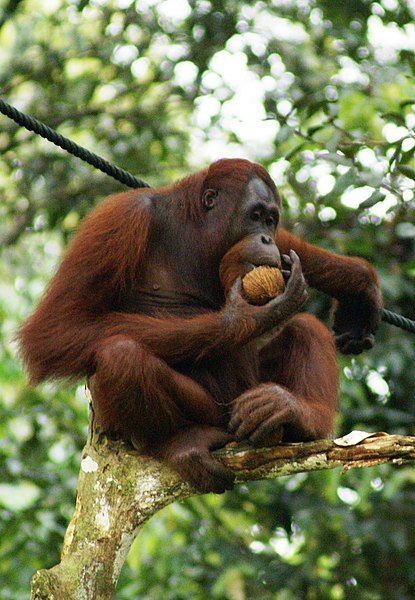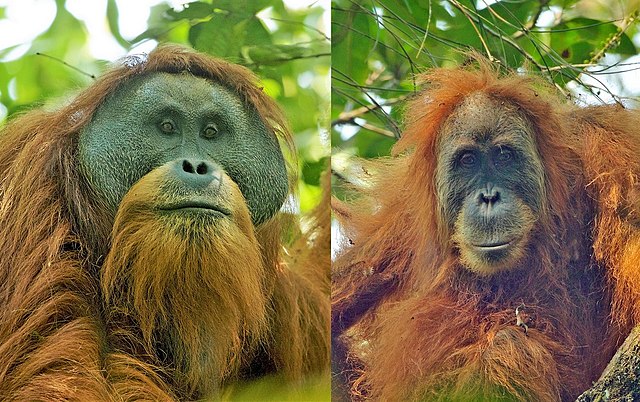Gigantopithecus is an extinct genus of ape that lived in southern China from 2 million to approximately 300-200,000 years ago during the Early to Middle Pleistocene, represented by one species, Gigantopithecus blacki. Potential identifications have also been made in Thailand, Vietnam, and Indonesia. The first remains of Gigantopithecus, two third molar teeth, were identified in a drugstore by anthropologist Ralph von Koenigswald in 1935, who subsequently described the ape. In 1956, the first mandible and more than 1,000 teeth were found in Liucheng, and numerous more remains have since been found in at least 16 sites. Only teeth and four mandibles are known currently, and other skeletal elements were likely consumed by porcupines before they could fossilise. Gigantopithecus was once argued to be a hominin, a member of the human line, but it is now thought to be closely allied with orangutans, classified in the subfamily Ponginae.
Gigantopithecus
Friedemann Schrenk [de] holding the holotype Gigantopithecus blacki molar
Gigantopithecus is closely allied with orangutans (a male Bornean orangutan above)
Gigantopithecus molar
Orangutans are great apes native to the rainforests of Indonesia and Malaysia. They are now found only in parts of Borneo and Sumatra, but during the Pleistocene they ranged throughout Southeast Asia and South China. Classified in the genus Pongo, orangutans were originally considered to be one species. From 1996, they were divided into two species: the Bornean orangutan and the Sumatran orangutan. A third species, the Tapanuli orangutan, was identified definitively in 2017. The orangutans are the only surviving species of the subfamily Ponginae, which diverged genetically from the other hominids between 19.3 and 15.7 million years ago.
Orangutan
Flanged male Bornean, Sumatran and Tapanuli orangutans
Fossil skull of Sivapithecus sivalensis, an extinct relative of orangutan
Adult male (left) and female Tapanuli orangutans


![Friedemann Schrenk [de] holding the holotype Gigantopithecus blacki molar](https://upload.wikimedia.org/wikipedia/commons/thumb/5/5d/F._Schrenk_mit_Gigantopithecus-Molar_2005.jpg/640px-F._Schrenk_mit_Gigantopithecus-Molar_2005.jpg)





